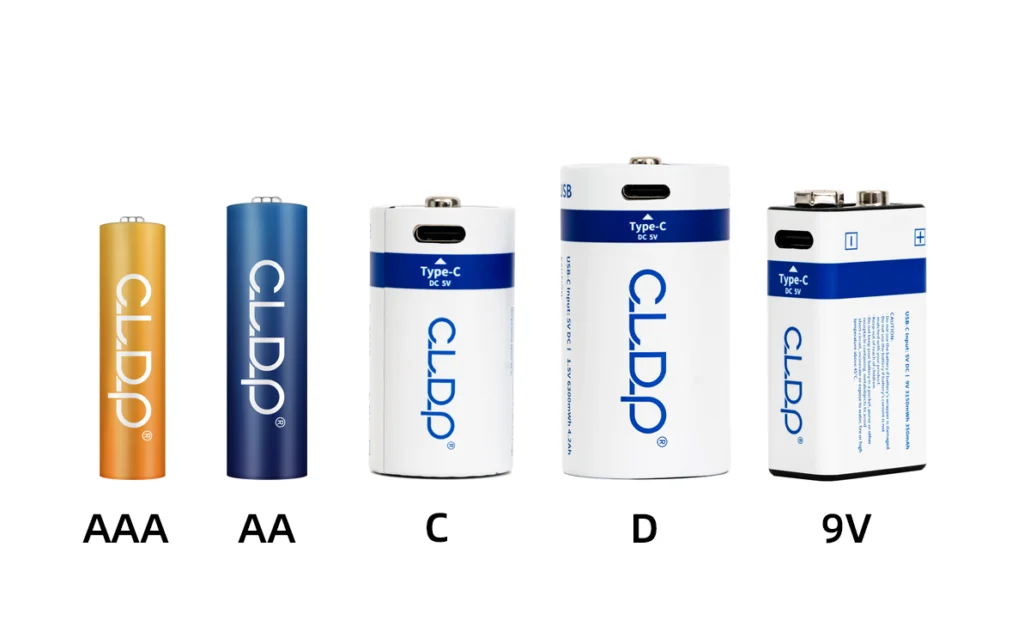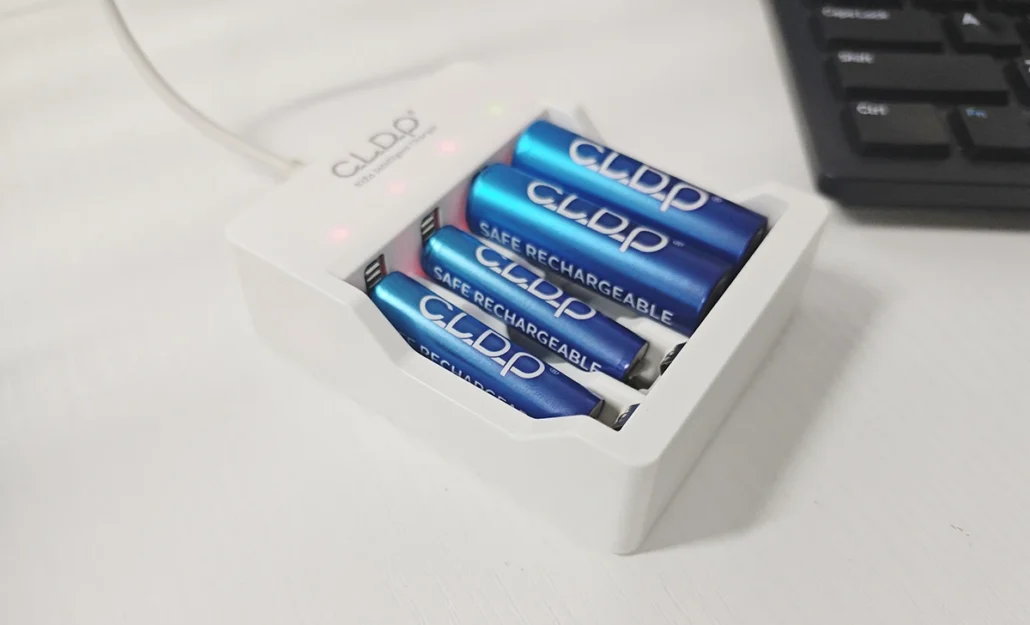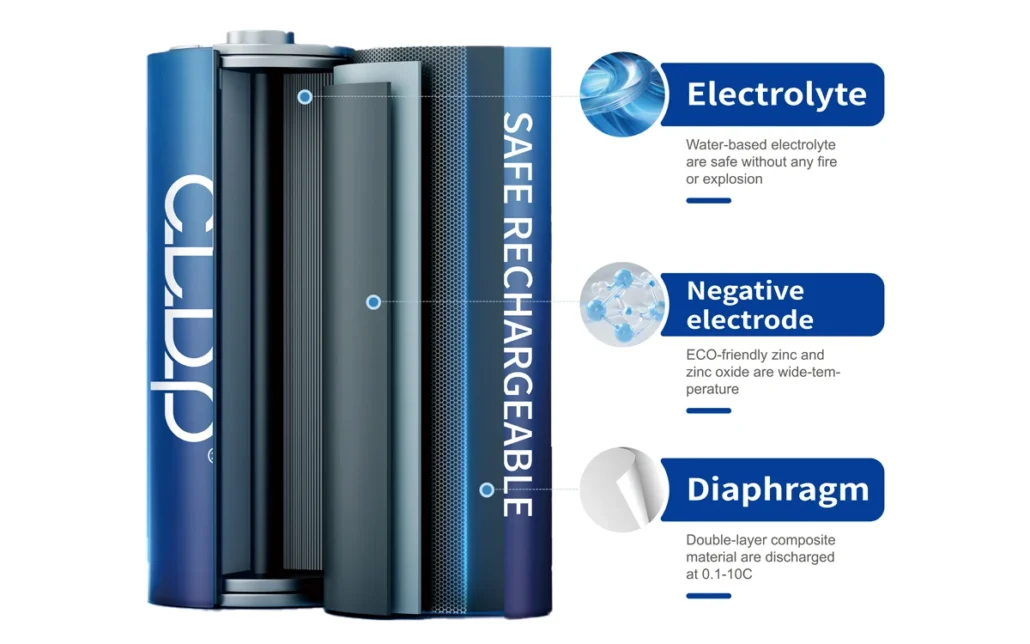Household battery sizes are mainly divided into several common types, each with different sizes, capacities, and application scenarios.
Disposable and rechargeable cylindrical batteries
AA (No.5 battery):
Size: Approximately 14 millimeters in diameter and 50 millimeters in height.
Usage: Widely used in electric toys, portable speakers, cameras, flashlights, wireless mice, keyboards, game controllers, etc.
AAA (No.7 battery):
Size: Approximately 10.5 millimeters in diameter and 44.5 millimeters in height.
Usage: Suitable for devices with small size and low power consumption, such as small remote controls, electronic scales, MP3 players, calculators, hearing aids, etc.
C (No.2 battery):
Size: Approximately 26 millimeters in diameter and 50 millimeters in height.
Usage: Mostly used for devices that require high current output, such as radios, flashlights, large toys, etc.
D (No.1 Battery):
Size: Approximately 33 millimeters in diameter and 61.5 millimeters in height.
Usage: Usually used on high power consuming devices, such as old-fashioned portable radios, spotlights, certain types of electric toys or tools.
9V battery:
Size: Rectangular design with unique layout of connection terminals.
Usage: Commonly used in smoke alarms, safety systems, wireless doorbells, and other small electronic devices that require high efficiency voltage.
Button Cells
Button batteries have various chemical compositions, including silver oxide, zinc air, alkaline, etc. They are commonly used in small electronic devices such as watches, calculators, hearing aids, car keys, etc. Specific models such as CR2032, LR44, SR626SW, etc.

Lithium batteries with special shapes
For example, 18650, 21700 and other models of lithium-ion batteries are usually rechargeable and used in more specialized devices such as laptops, electric vehicles, LED flashlights, mobile power banks, etc. These types of batteries are generally not sold directly to ordinary consumers, but exist as built-in components within the product.
matters needing attention
Choose the appropriate battery: Select the appropriate disposable or rechargeable battery according to the specific needs of the device.
Proper use and storage: Follow the correct installation method, avoid mixing old and new batteries, and store the batteries in a dry and cool place.
Environmental protection treatment: Waste batteries should be properly recycled according to local regulations and should not be discarded at will.
The above are common battery models and their basic uses in households. With the development of technology, new battery standards and technological improvements may emerge in the market to adapt to constantly changing demands.




